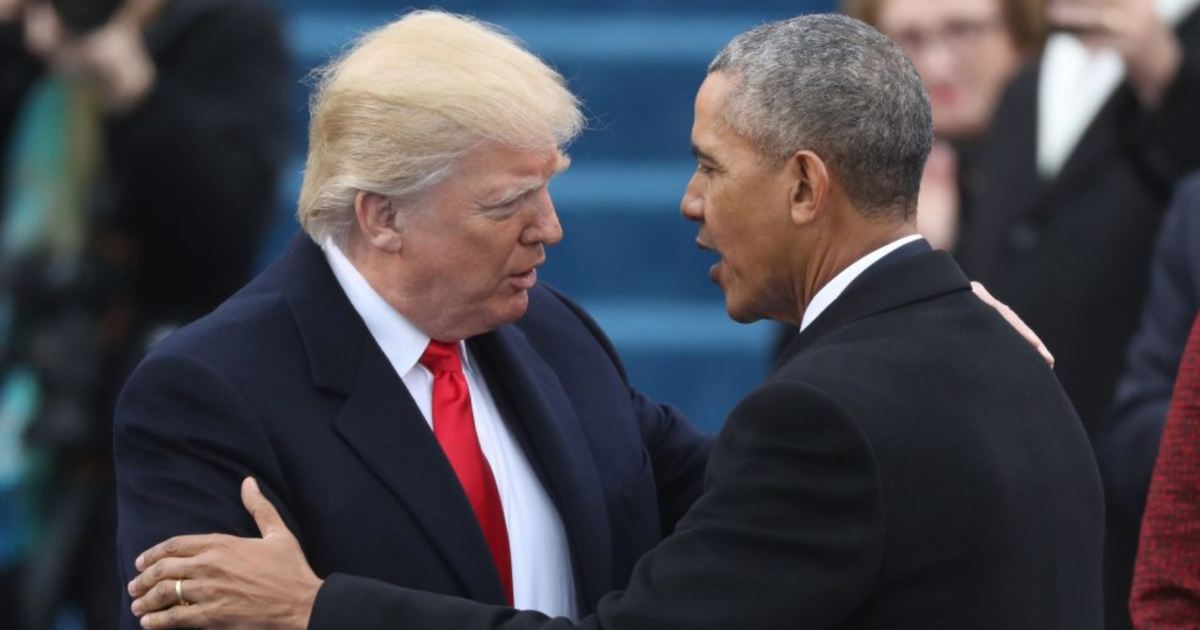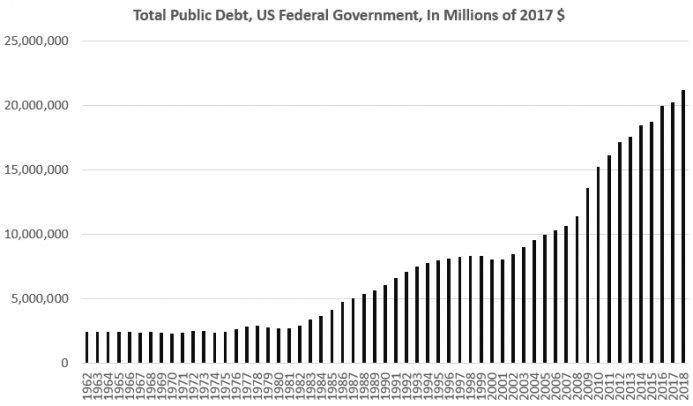|
By Ryan McMaken
Even before Trump was elected it was already clear that no one should expect him to cut spending and rein in annual budget deficits. Trump has always been about buying votes with more and more spending. Moreover, there is no evidence that Republicans are any more fiscally restrained than Democrats when in control of the federal government. After all, when the Republicans controlled both the White House and all of Congress, from 2003 to 2007, government spending grew at one of the fastest rates in decades. With the end of fiscal year 2018, and with Trump's support for a historically large spending hike for defense-related departments, we're getting a sense of Trump's fondness for spending as president. While true that, so far, Trump doesn't represent a sizable departure from the spending trends of the previous administration, he nevertheless is confirming for us that budget cutting is not part of his agenda. Moreover, the spending increases we're seeing now are coming in a boom period. As the huge spending increase of 2009 has shown — spending that can be blamed on both Bush and Obama — we should expect big spending increases in times of recession. 2018: A Big Year for Government Spending Fiscal year 2018 ended last month, and during that period, the US government added more than a trillion dollars to the national debt. As of October 1, 2018, the first day of the 2019 fiscal year, the Federal government's debt outstanding totaled $21,606,948,383,546.28. On year earlier, the total was $20,244,900,016,053.51. At 21 trillion dollars, the US national debt is, of course, at the highest level it's ever been.
Not surprisingly, given generally stable federal receipts, debt is being driven by federal spending which is continuing at a rapid pace.
In the 2018 fiscal year, the OMB estimates federal spending topped $4.17 trillion, which is an increase of 4.8 percent over fiscal year 2017. That's the second-highest growth rate in the past five years, and the third highest in the past decade. 2018's spending growth rate also was larger than the growth rate recorded for seven out of eight budgets signed by Democrat Bill Clinton. If the OMB's estimates for 2019 turn out to be true, spending growth will hit a ten-year high of 5.6 percent in 2019.
Read the rest of this article at The Mises Institute.
Comments are closed.
|
Archives
July 2024
|



 RSS Feed
RSS Feed



